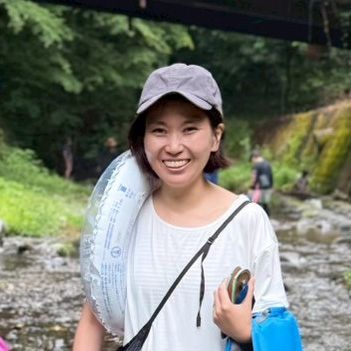New Year's in Doi Town, Shikokuchuo City, Ehime Prefecture
How did you all spend the New Year holidays?
I was visiting my partner's parents' home in Doi-cho, Shikokuchuo City, Ehime Prefecture.
My parents' home is in Saitama, and my grandparents' home is in Tokyo, so I've never been out of the Kanto region for Obon or New Year's, and I'm not familiar with the so-called "countryside." So, this experience of returning to the countryside is a new one for me. Throughout my New Year's in Ehime, I realized that there is a lot to talk about in the countryside.
For example, the view.
Ehime Prefecture is famous for its mandarin oranges, but there are also plump orange citrus trees everywhere, including yuzu, hassaku, amakan, bontang... In the field behind my partner's parents' house, there are about 10 kinds of citrus trees, and my father-in-law explained to me, "This is Kiyomi, this is kumquat, this is ◯◯, this is ✕✕...", but there are too many kinds to remember. (I checked later and found out that they are Anzaikan, Hassaku, Buntan, Kiyomi, Kanpei, Setoka, Haruka, Kumquat, Yuzu, Sudachi, Kabosu, Lemon, etc.)
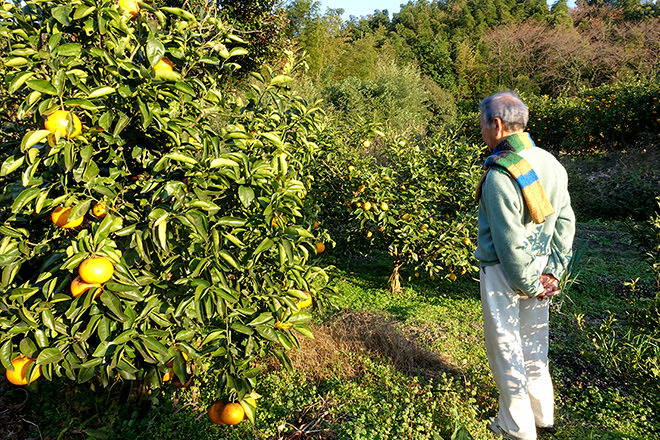
My father-in-law explained about the citrus trees. He said that in addition to the trees that are already bearing fruit, he is also trying to grow new trees.
From afar, the orange spots can be seen spreading across the fields in the mountains. The people of the town may not think anything of it, as it is an everyday sight, but to me, who is not used to seeing them, I found them endearing.
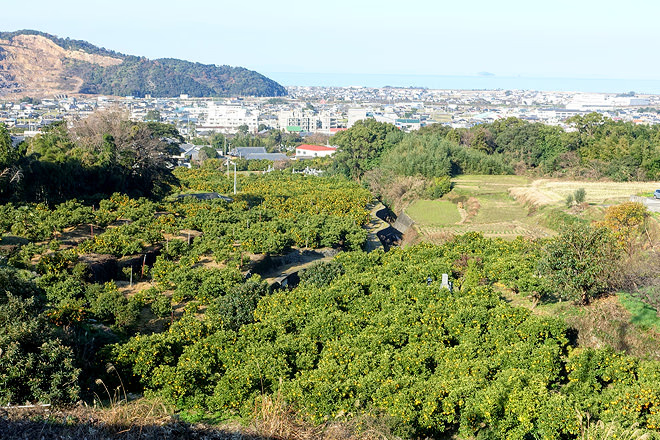
Citrus trees with yellow fruit. Wherever I walked, I encountered citrus trees.
In addition, Shikokuchuo City is surrounded by the Seto Inland Sea and the Shikoku Mountains, so you can enjoy a luxurious morning run that takes you to both the sea if you head north and the mountains if you head south. If you ride the Yosan Line, which runs east-west across Ehime Prefecture and Kagawa Prefecture, the scenery alternates between the sea and the mountains, so you'll never get bored of looking at it.
Even in terms of food culture, there are many things that seem to be unique to this region. On New Year's Day, I had zoni, which consisted of bonito, kelp stock, and light soy sauce, with ingredients such as taro, daikon, carrots, tofu, and round rice cakes, and was garnished with mitsuba and yuzu peel. (Note: However, this is not the standard in Doi Town, and there are apparently some unique arrangements.)
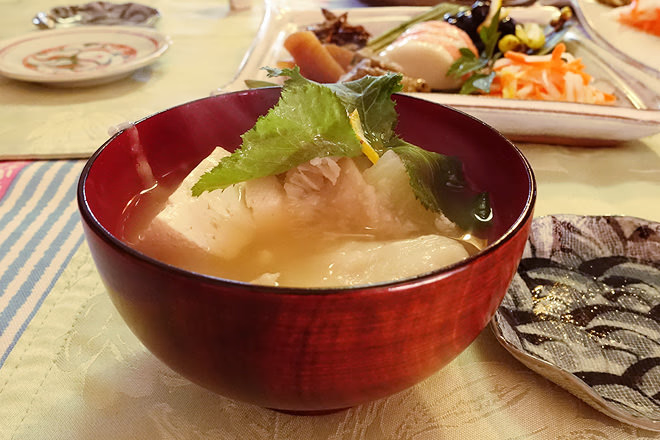
Ozoni from Doi-cho, Ehime Prefecture. This luxurious dish contains daikon radish, taro, mitsuba, and yuzu, all of which are freshly picked from the fields.
The ozōni at my parents' house doesn't contain tofu, but does contain chicken, giving it a rich flavor. The greens are also komatsuna, and the rice cakes are square.
By the way, the ozoni at my friend's house in Takamatsu, Kagawa Prefecture, is mysteriously white miso flavored with sweet bean paste mochi. When I looked into it, I found that there are many different kinds of ozoni all over the country (see " Map of the Zoni Cultural Area of the Japanese Archipelago "), and they are all unique, so I'm quietly waiting for a zoni bar to open somewhere where I can compare different kinds of zoni.
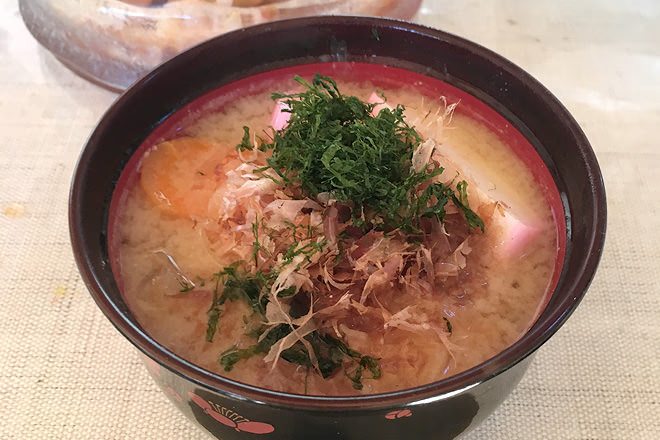
Ozoni at a friend's house in Takamatsu, Kagawa Prefecture. White miso flavor with sweet bean paste mochi really does exist!
As for their lifestyle, there were some things I envy that I don't have in my life. One of them is farming. They're not farmers, so their fields are small, but they grow the vegetables that they put on their dinner tables every day.
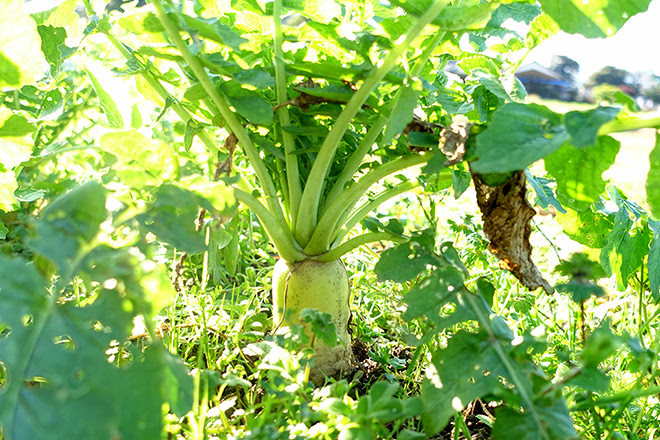
The heads of the radishes are peeking out. Since they are home grown, are weeds allowed to grow as much as they want?!
In the fields cultivated by my father-in-law, various kinds of vegetables such as radishes, Chinese cabbage, cabbage, lettuce, broccoli, onions, potatoes, taro... were growing well even under the cold winter sky. Because they are grown without pesticides, my father-in-law removes the caterpillars on the vegetables one by one by hand every day. The vegetables that he cared for so much appeared on the dinner table every day while I was there, and I ate them with deep emotion, thinking, "Ah, so these are the vegetables that grew in that field. They are delicious and precious."
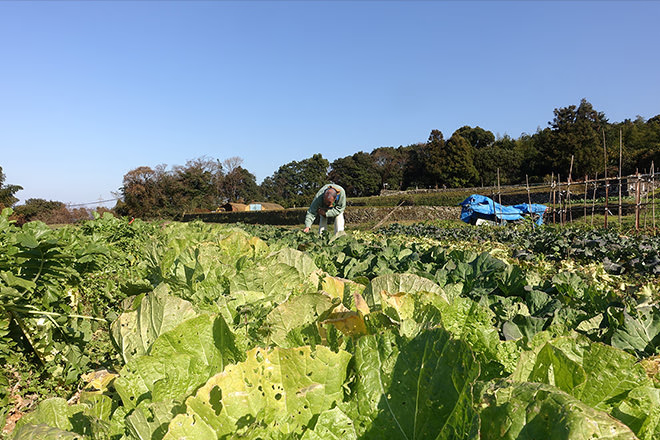
My father-in-law removes caterpillars from Chinese cabbage.
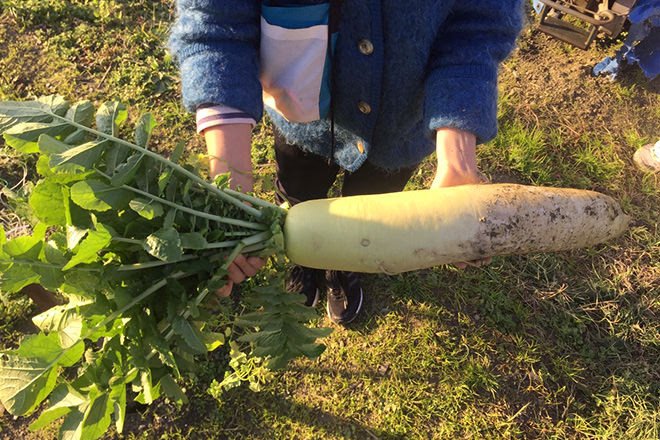
I finally pulled out the daikon radish. It was quite heavy. I enjoyed it as an oden ingredient.
In this way, Doi-cho has many things that Tokyo does not have, and there is a richness in daily life. If this were New Year's in Tokyo, what kind of richness would I convey?
What can I say about living in Tokyo?
On this Monosasu website, a section called "Work and Life" provides reports on activities outside of Tokyo, where the company's headquarters is located, such as in Kamiyama, Thailand, and Osaka.
Each region has its own unique characteristics in the everyday life that make them interesting to me personally.
While reading such articles, I suddenly wondered. If I were to capture Tokyo, where I live, as a single area, what would I be able to convey? Skytree? Arena? Or Shibuya's scramble crossing? If I were to tweet those words, I feel as if they would be quickly smoothed over by the giant bulldozers of the Internet, and become like part of the smooth surface of a road, that is, words buried by the unspecified majority.
In Doi-cho, even a single radish growing in a field shines as if to show off its presence, but do the stripes on the road at Shibuya's scramble crossing have the same brilliance? I have always felt that it is difficult to talk about something in Tokyo. I wonder if people want to be freed from that difficulty, so they go to the mountains or the sea on the weekends, or sometimes want to travel far away.
However, it is also true that this place, the Tokyo I live in, with its hard, homogeneous asphalt, is a kind of "nature" to me. When I was a child living in a housing complex, there was no sea or mountains, and the natural scenery was surrounded by concrete. Even now, when I see photos of housing complexes, something about them moves me.
One of my favorite writers, Azuma Hiroki, has a phrase in his writings that goes, "Diversity once passed through the smooth." *1 Azuma describes the "fake" food stall village he saw in a shopping mall during a trip to Singapore as a place where cultural differences had become uniform. At the same time, he says that the hustle and bustle of the people there is an undeniable fact. In other words, he says that there is an undeniable reality to the current situation in which people are active within the fiction of a "fake" food stall village.
If I, who live in Tokyo, were to write an article on "Work and Life in Tokyo," I would have to search for words to describe the richness of these "new realities." I think that's where the possibilities lie... I hope to write something about the smooth diversity of Tokyo someday.
※1 Hiroki Azuma, "On the occasion of the launch of Thought Map β" (from "Thought Map β Vol.1" Contexts (now Genron), first published in 2011)

